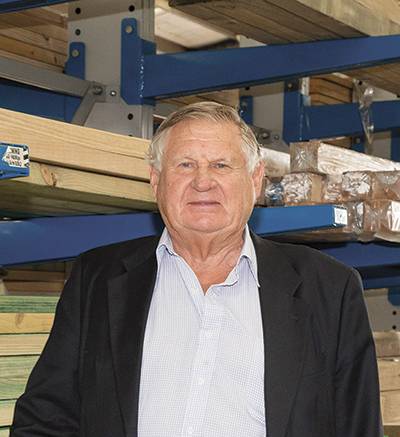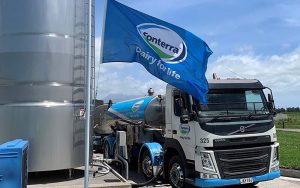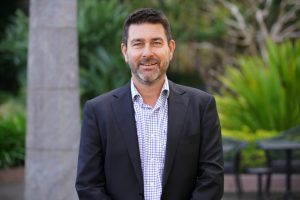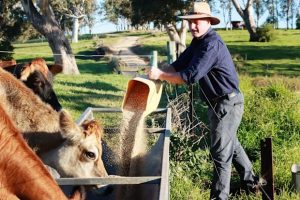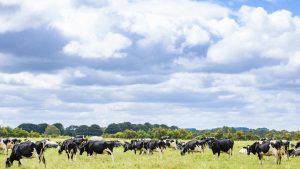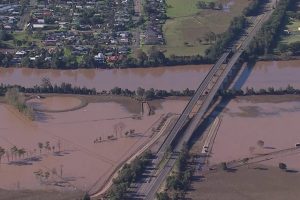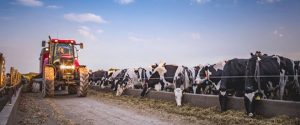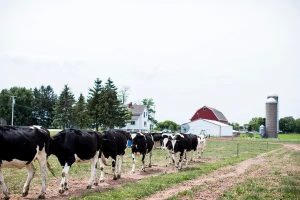
That’s the concern of former Woolworths chairman John Dahlsen whose 107-page report (with a further 64-page supplement in response to government questions), details how a retail levy on drinking milk shared among all Australian dairy farmers could work and why it is necessary.
Although president of peak body Australian Dairy Farmers (ADF) Terry Richardson was handed the report 10 weeks ago on March 23 and it was endorsed by the United Dairy Farmers of Victoria last week, ADF policy and strategy director Craig Hough said on Friday that he was yet to read it.
“I haven’t read the report yet so I don’t know if it’s just his [Mr Dahlsen’s] views or whether he’s got consensus or he’s got evidence, I don’t know, I haven’t read it yet so I’m going to at some point,” Mr Hough said.
Instead, he had been focusing on a standard milk supply contract template, on-farm inductions and the COVID-19 response.
The UDV’s in-principle endorsement is the first step in a long process.
UDV president Paul Mumford said he thought it could take 12 months before the idea could be implemented.
“It’s difficult for me to give a timeline but one of my concerns with the Dahlsen methodology is nothing about the matrix of the document but the time it’s going to take to implement,” he said.
“I don’t think the implementation stage is going to be easy.
“I think there’s huge hurdles to jump through before we see the money flowing from the consumer to the farmer.
“And I honestly feel that it could be a 12-month timeline.”
It had taken 10 days to be passed by the UDV, then more time to get to the ADF policy council meeting last Wednesday.
While Mr Dahlsen expected the other state dairy organisations to be briefed ahead of the ADF meeting and ready to vote on the proposal, it had instead been sent to another committee for deliberation.
When convened – hopefully in one to two weeks – that committee, the market and trade policy advisory group (PAG), would then likely seek advice from Dairy Australia.
The ADF executive would also analyse the document to advise the PAG.
The PAG’s recommendations would then go back to policy council, which would then brief the ADF board, so it could vote on the matter.
After all that was done, ADF would be authorised to represent the dairy industry to Canberra on the matter.
“We can wish for something to move as swiftly as possible, but, at every point, it has to be ratified and and gone through its rigours and … advocacy is so arduous, it’s so slow,” Mr Mumford said.
Mr Dahlsen said the need for action demanded a more timely response.
“I think the test here is really the quality of the people and the quality of the organisations that are meant to be representing dairy farmers and whether they’re more concerned with process as opposed to outcomes and doing something in the interest of the dairy farmers,” he said.
“I think the real issue now emerging is the role of the Minister for Agriculture and these organisations that are so-called representing the dairy farmer, because I think there’s a complete disconnect.
“Clearly what’s happening is at the ADF level is, despite nice words, that process is being used to frustrate and slow this down.”
While the advocacy bodies are notoriously underfunded and overstretched, Mr Dahlsen said that should not stymie the exchange of ideas.
“I don’t think this is a resource issue; I think this is an attitude issue,” he said.
“All the UDV councillors in Victoria, we had to conclude at 4 o’clock because they had to get off and do milking but they managed to find an hour to ask questions about this thing.
“When you’ve got limited resources, you’ve got to cut through and make judgments about what’s important, what’s not important.
“I would think, if you’re worried about the dairy sector at the moment, the most critical thing that you’ll be looking at is how we get some income into these dairy farms to save them failing at the rate of nine or more a week.
“The leaders in the ag community should have an intimate understanding of all the issues and, if they’re concerned about a solution, they shouldn’t be spending a lot of time contemplating solutions and it shouldn’t be difficult forming a view about my solution.
“I’m really happy to answer questions from ADF.
“I am doing this pro bono, I’m not a lobbyist, I’ve got nothing to gain myself, I just have a deep interest in public policy and I am very keen to engage and discuss openly with anyone.”
The Dahlsen proposal would have the government mandate the price of all drinking milk on supermarket shelves rises by a certain amount.
While Mr Dahlsen suggested a levy of 40 cents a litre in the first year, it would be annually reviewed by the ACCC after submissions from industry stakeholders.
At 40c/l, the levy would return $220,396 to the average Australian dairy farm producing 1,657,110 litres of milk a year.
All the money raised would be handled by an independent entity.
Every Australian dairy farmer would get a share of the money in line with their milk production for that month, irrespective of the processor they supplied.
